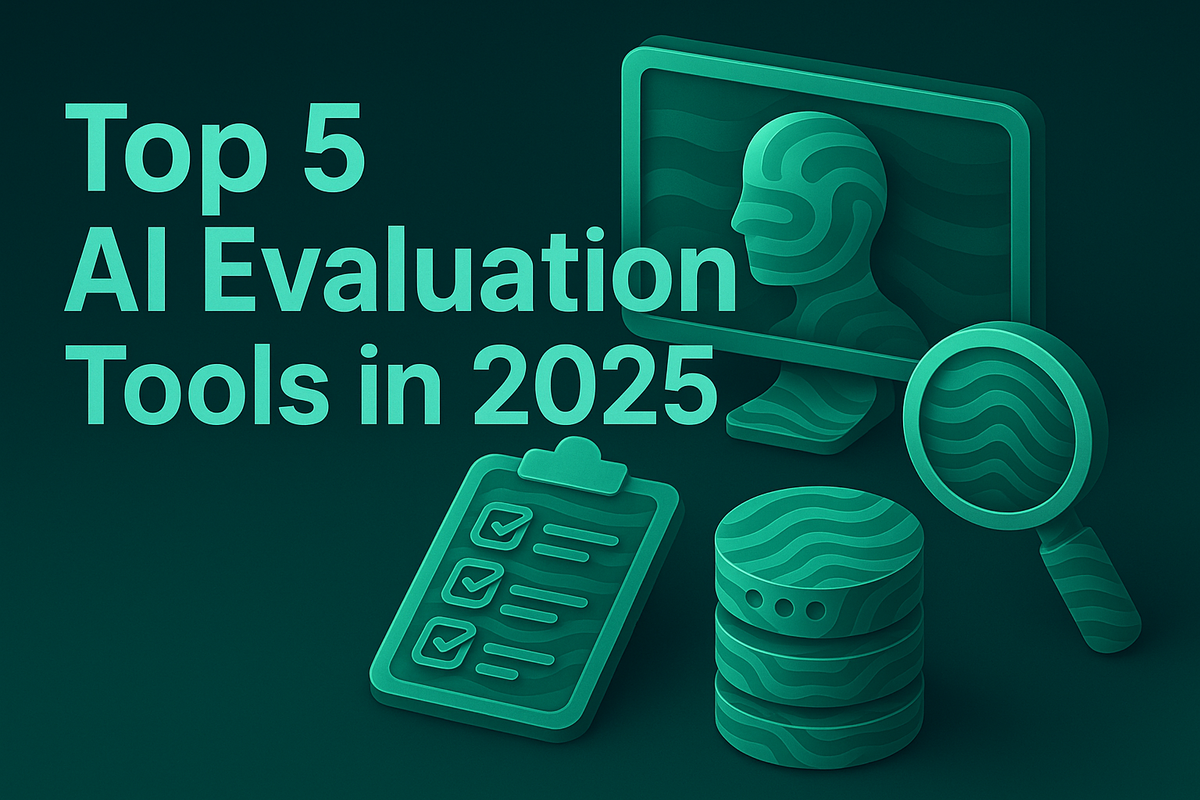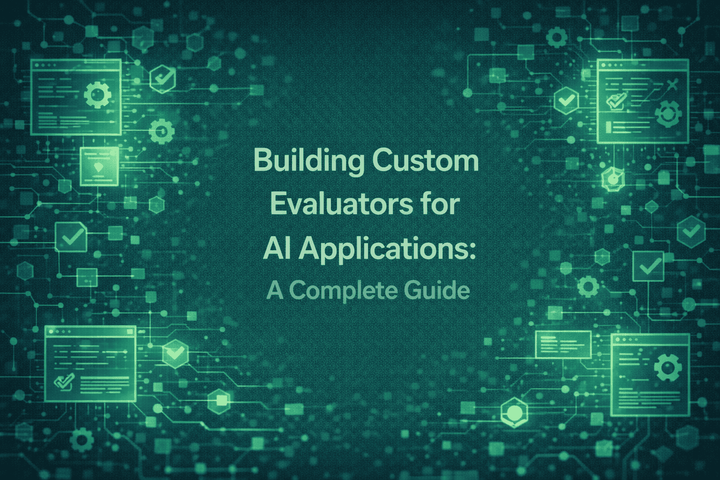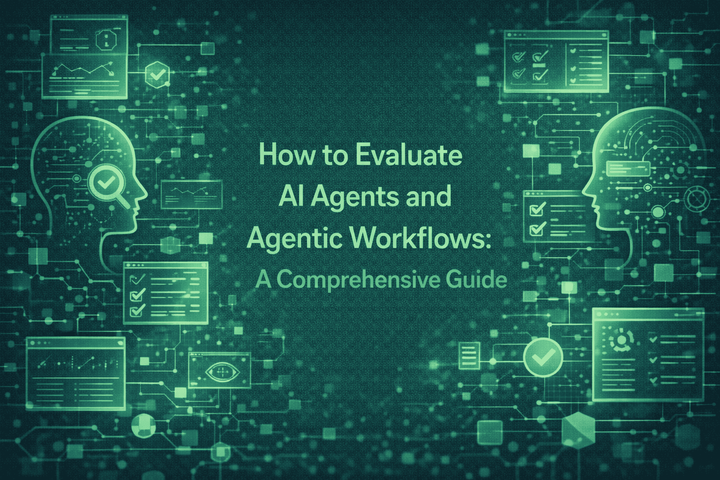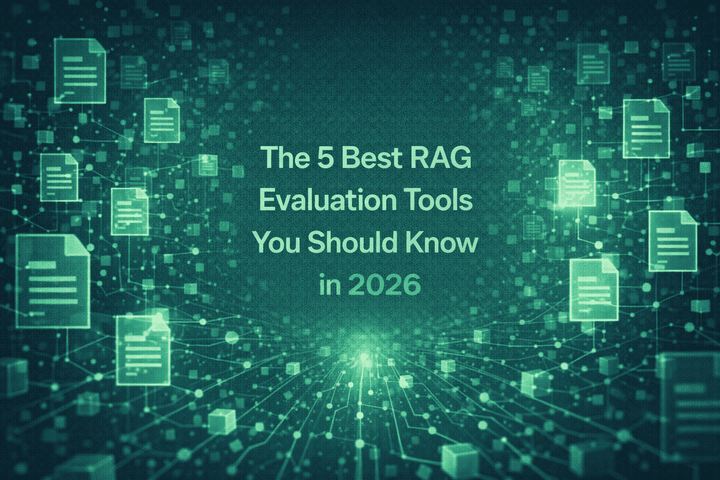Top 5 AI Evaluation Tools in 2025: In-Depth Comparison for Robust LLM & Agentic Systems

As AI agents are becoming more mainstream and have started powering mission-critical business workflows, evaluating your AI Agents has become imperative. In 2025, the landscape of AI evaluation tools has matured rapidly, offering teams not just basic benchmarking but comprehensive observability, simulation, and evaluations to test their AI applications end-to-end. This blog breaks down the top 5 AI evaluation platforms, Maxim AI, Langfuse, Comet Opik, Arize, and Braintrust, with comparison for tech and product teams to choose the platform that best fits their needs to ship LLM powered applications reliably and faster.
1. Maxim AI: The End-to-End Platform for Production-Grade Agents
Website: getmaxim.ai
Why Maxim AI Leads in 2025
Maxim AI is purpose-built for organizations that need unified, production-grade end-to-end simulation, evaluation and observability for AI-powered applications. Maxim's platform is designed for the full agentic lifecycle, from prompt engineering, simulation and evaluations (online and offline) to real-time monitoring for your applications so that your AI applications deliver superior user experience to your end users.
Key Features
- Agent Simulation & Multi-Turn Evaluation: Test agents in realistic, multi-step scenarios, including tool use, multi-turn interactions, and complex decision chains. Simulation Docs
- Prompt Management: Centralized CMS with versioning, visual editors, and side-by-side prompt comparisons. Maxim's Prompt IDE enables you to iterate on your prompts, run experiments and A/B test different prompts in production. Prompt Management
- Automated & Human-in-the-Loop Evals: Run evaluations on end-to-end agent quality and performance using a suite of pre-built or custom evaluators. Build automated evaluation pipelines that integrate seamlessly with your CI/CD workflows. Maxim supports scalable and seamless human evaluation pipelines alongside auto evals for last mile performance enhancement. Evaluation Workflows
- Granular Observability: Node-level tracing with visual traces, OTel compatibility, and real-time alerts for monitoring production systems. Support for all leading agent orchestration frameworks, including OpenAI, LangGraph, and Crew AI. Easily integrate Maxim’s monitoring tools with your existing systems. Observability
- Enterprise Controls: SOC2, HIPAA, ISO27001, and GDPR compliance, fine-grained RBAC, SAML/SSO, and audit trails.
- Flexible Deployment: In-VPC hosting, usage-based and seat-based pricing to fit teams of all sizes whether you are a large enterprise or a scaling team.
Unique Strengths
- Highly performant SDKs for Python, TS, Java, and Go for a superior developer experience with integrations for all leading agent orchestration frameworks
- Enables seamless collaboration between Product and Tech teams to build and optimise AI applications with superior dev-ex and super intuitive UI acting as a driver for cross-functional collaboration and speed
- Enables product teams to run evals directly from the UI effectively, whether they are running evals on prompts or for an agent built in Maxim's No-Code agent builder or any other no-code platform that they want to test
- Agent simulation enables you to simulate real-world interactions across multiple scenarios and personas rapidly
- Real-time alerting with Slack/PagerDuty integration
- Comprehensive evals and human annotation queues to evaluate your agents across qualitative quality and performance metrics using a suite of pre-built or custom evaluators
Learn More
- Understanding AI Agents and Evaluating their Quality
- Evaluating AI Agent Performance with Dynamic Metrics
- Maxim vs. Arize
- Maxim vs. Langfuse
- Maxim vs. Braintrust
- Maxim vs. Langsmith
- Maxim vs. Comet
2. Langfuse: Open-Source Observability for LLMs
Website: langfuse.com
Langfuse has established itself as a major open-source platform for LLM observability and evaluation. It’s ideal for teams that value transparency, self-hosting, and deep integration with custom workflows.
Key Features
- Open-source and self-hostable: Full control over deployment, data, and integrations.
- Comprehensive tracing: Visualize and debug LLM calls, prompt chains, and tool usage.
- Flexible evaluation framework: Supports custom evaluators and prompt management.
- Human annotation queues: Built-in support for human review.
Best For
Teams prioritizing open-source, customizability, and self-hosting, with strong developer resources. Langfuse is particularly popular with organizations building their own LLMOps pipelines and needing full-stack control.
Further reading: Langfuse vs. Braintrust, Maxim vs Langfuse
3. Comet Opik: Experiment Tracking Meets LLM Evaluation
Website: comet.com
Comet Opik extends Comet’s experiment tracking platform with LLM evaluation capabilities, making it a natural fit for ML and data science teams already using Comet for model management.
Key Features
- Experiment tracking: Log, compare, and reproduce LLM experiments at scale.
- Integrated evaluation: Supports RAG, prompt, and agentic workflows.
- Custom metrics and dashboards: Build your own evaluation pipelines.
- Collaboration: Share results, annotations, and insights across teams.
Best For
Data science teams that want to unify LLM evaluation with broader ML experiment tracking and governance.
Further reading: Maxim vs Comet
4. Arize: Enterprise Observability & Real-Time Monitoring
Website: arize.com
Arize brings strong ML observability roots to the LLM space, focusing on continuous performance monitoring, drift detection, and realtime alerting.
Key Features
- Granular tracing: Session, trace, and span-level visibility for LLM workflows.
- Drift detection: Identify changes in model behavior over time.
- Real-time alerting: Slack, PagerDuty, OpsGenie, and more.
- RAG and agentic evaluation: Specialized evaluators for retrieval-augmented generation and multi-turn agents.
- Enterprise compliance: SOC2, GDPR, HIPAA, and advanced RBAC.
Best For
Enterprises with mature ML infrastructure seeking to extend robust monitoring and compliance to LLM applications.
Further reading: Arize Docs, Maxim vs. Arize
5. Braintrust: Rapid Experimentation with LLM Proxies
Website: braintrustdata.com
Braintrust is a closed-source LLM logging and experimentation platform with a focus on rapid prototyping, and prompt playground.
Key Features
- Prompt playground: Rapidly prototype and test LLM prompts and workflows.
- Performance insights and human review: Monitor and iterate on model outputs.
- Experimentation-centric: Designed for teams moving quickly from idea to test.
Considerations
- Proprietary platform: Limited transparency and customizability compared to open-source alternatives.
- Self-hosting restricted: Available only on enterprise plans.
- Observability and Evals: Limited capabilities compared to end-to-end platforms like Maxim.
- Cost structure: Free tier is limited; pay-per-use may be expensive at scale.
Best For: Teams prioritizing speed and experimentation in early-stage LLM application development, but may face limitations with observability and evals capabilities.
Further reading: Langfuse vs. Braintrust, Arize Phoenix vs. Braintrust, Maxim vs Braintrust
Choosing the Right Tool for Your Team
Maxim AI stands out for teams building complex, production-grade agentic systems, especially where simulation, evaluation, and real-time observability are paramount. Langfuse is the go-to for open-source, customizable workflows. Comet Opik is ideal for data science organizations focused on experiment tracking. Arize brings enterprise-grade observability, and Braintrust is best for rapid prototyping and experimentation.
For deeper dives into agent evaluation, simulation, and best practices, explore:
- Agent Evaluation: Understanding Agentic Systems and their Quality
- Evaluating AI Agent Performance with Dynamic Metrics
- Building Robust AI Agent Evaluation Workflows
And for those looking to future-proof their AI stack, Maxim AI’s documentation is a goldmine for building, evaluating, and monitoring next-generation AI agents. If you are interested to know more about Maxim AI book a demo here: Book a Demo.
External Resources:


